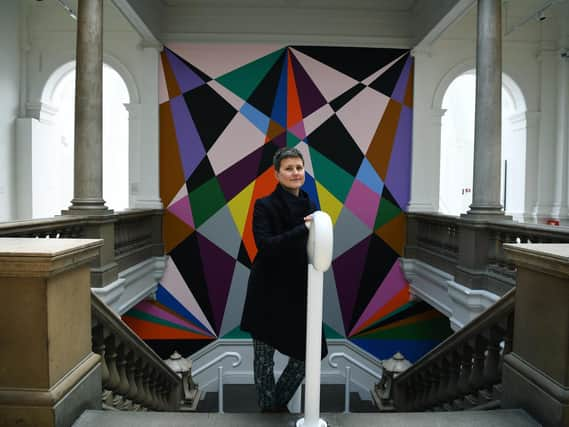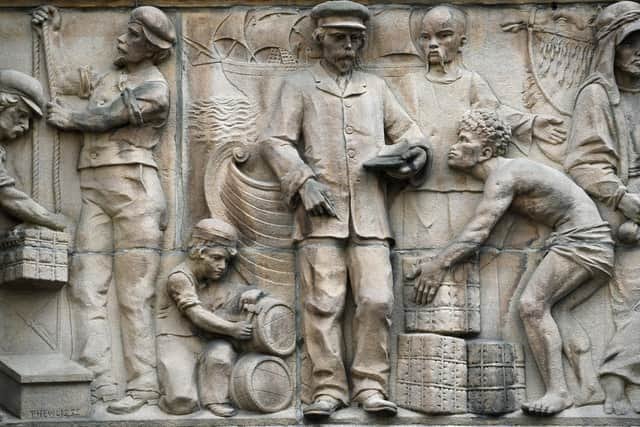From Andy Warhol to Henry Moore - how Leeds Art Fund has helped support the city's collections


John Atkinson Grimshaw, whose hauntingly evocative pictures of Victorian life have lost none of their lustre, was born in the city, while Jacob Kramer, a Russian emigré whose portrait subjects included Gandhi and Delius, made Leeds his home after the First World War.
Then there’s Damien Hirst who grew up in the city and studied at Leeds College of Art and Design and has gone on to become one of the most famous – and richest – artists on the planet.
Advertisement
Hide AdAdvertisement
Hide AdThe city’s art scene has been aided by the Leeds Art Fund (LAF), which has been going for more than a century. It owns or has helped buy more than 430 works for Leeds art galleries including those by such luminaries as Andy Warhol, Francis Bacon and Henry Moore and it continues to play a key role in acquiring contemporary and historic art.


Established in 1912 it is one of the oldest ‘friends’ groups in the country and this month it launches a series of online talks about topical debates on art and the city’s cultural heritage.
Art historian and curator Rebecca Wade, who is also a Trustee of Leeds Art Fund, has organised the talks, which include guest speakers from the United States.
In pre-pandemic days, the art fund would help organise visits to art exhibitions around the country and in Europe, and viewed the online talks as a way of bringing art to people in the safety of their home. “During the lockdown we thought ‘how can we continue to connect with our members and grow it to encourage new audiences?’” says Wade.
Advertisement
Hide AdAdvertisement
Hide Ad“It’s also an opportunity to invite people who perhaps have a connection to Leeds, but who have moved away, to get involved. So it’s a way for us to broaden out what we’re doing so more people can celebrate the visual arts in our city and to engage in debates about public art and public statues, which have been in the news recently.”
The subject of one of the talks is Frank Rutter founder of Leeds Art Fund. Rutter was also curator of Leeds Art Gallery for five years before and during the First World War. “He was an influential art critic on a national level and really championed modern art at a time when it was unusual to do so in this country,” says Wade.
He was also an activist and a leading cultural light in the city during this period. “He gave shelter to suffragettes in his home in Chapel Allerton after they were released from prison, and he was an interesting character.”
The first talk, led by Dr Rebecca Senior, is this Thursday and will discuss issues surrounding race in British visual culture. She will talk about, among other things, the frieze that adorns the West Riding Union Bank building on Park Row, which anyone who lives in Leeds will no doubt have walked past many times.
Advertisement
Hide AdAdvertisement
Hide Ad“This was the only work of public art that was highlighted by Leeds City Council’s recent review of public statues as being problematic because of its representation of an enslaved person. So we wanted to get Rebecca in because she’s an expert in post-colonial monuments.”
Many people might not be familiar with Leeds Art Fund, but Wade says it helps support the city’s museums and galleries. “Over more than a century we have helped to acquire more than 430 works of art, both historic and contemporary for the city of Leeds and its people to enjoy. We’re acquiring all the time, even during the lockdown.”
Wade says from the outset the fund has been ahead of the game in terms predicting which artists work would be worth acquiring. “It was able to collect works often directly from living artists, and it was collecting quite avant-garde, modern artworks before they were fashionable or even widely accepted. So it has a reputation for keeping its finger on the pulse.”
Over the years it has bought everything from decorative art through to sculpture, paintings and prints. Among recent acquisitions which the Leeds Art Fund has supported are Northern Art Prize winner Pavel Büchler’s Fly and JMW Turner’s The Valley of the Washburn, two works that could scarcely be more different.
Advertisement
Hide AdAdvertisement
Hide AdToday, Leeds is home to a string of internationally renowned cultural institutions including Opera North and Northern Ballet, as well as the likes of the Henry Moore Institute and Leeds Art Gallery, though Wade feels the city doesn’t get the recognition it deserves when it comes to its art collections.
“I think Leeds has often suffered in comparison to some of its regional neighbours like Manchester, Liverpool and Newcastle and has been seen as a place that isn’t so engaged with culture. But if we look at the last century it’s just not true. If you look at artists like Barbara Hepworth and Henry Moore, right up to Damien Hirst – they all studied at what’s now Leeds Arts University.
“The museums and galleries and the collections we have in the city and nearby, form such a strong coalition that’s unbeatable in this country.”
She points to the popularity of both Yorkshire Sculpture Park and The Hepworth Wakefield and the success of the global Yorkshire Sculpture International in 2019, which saw an estimated 1.4m people interact with large scale works by Damien Hirst and others on public display in Leeds and Wakefield, by way of proof.
Advertisement
Hide AdAdvertisement
Hide AdThe pandemic has stymied our ability to enjoy art and culture, though perhaps it has also reminded us of its importance in our lives. Something we perhaps took for granted before.
“I think so many people have realised that art and culture can be a source of engagement, interest, comfort and creativity. And more people have got involved in making things in their own homes and seeking out opportunities to connect with art online, and what it means to them,” says Wade.
Leeds Art Fund has around 300 members (the standard annual subscription fee is £30) and is encouraging more people to get involved. “Every membership we get has a direct link to supporting arts and culture in our city.”
The city’s reputation as an art centre has ebbed and flowed since the turn of the last century, though it now has one of the best collections of British 20th-century art outside London. And Wade believes that easy access to art is more important now than ever before. “I think art will be critical to our recovery, particularly our mental health and wellbeing.”
Advertisement
Hide AdAdvertisement
Hide AdIt’s something that she says has happened before. “Leeds Art Gallery after both world wars produced exhibitions in response to these seismic events, and helped foster a sense of community and recovery and I think we can do that again.”
Tickets for the 30-minute talks are free to members and cost £5 to non-members and can be booked at www.eventbrite.com/e/133468707497
For more information about Leeds Art Fund, please visit www.leedsartfund.org
Let’s talk about art and sculpture
Here are some of the highlights of Leeds Art Fund’s online talks:
Advertisement
Hide AdAdvertisement
Hide AdThursday, April 22, 7pm – Allegory, Sculpture and the Construction of Race in British Visual Culture.
Dr Rebecca Senior leads a discussion on the relief for the West Riding Union Bank and its representation of our colonial past.
May, 20, 7pm – ‘Eyes on the Wall’: Discovering Post-War Architectural Sculpture.
Dr Dawn Pereira uses the Archive of Sculptors’ Papers at the Henry Moore Institute to see what it tells us about architectural sculpture in the post war era.
July 1, 7pm – An Artist’s Response to the City.
Join artist Jake Attree for a tour of his studio and a reflection on his early memories of visits to Leeds.